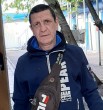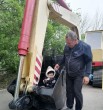-
 Максим, 53 года
Максим, 53 года
Лахденпохья -
 Игорь, 55 лет
Игорь, 55 лет
Балашов -
 Марина, 43 года
Марина, 43 года
Москва -
 Роман, 44 года
Роман, 44 года
Москва -
 Рамо, 24 года
Рамо, 24 года
ზუგდიდი -
 Пафнутий, 47 лет
Пафнутий, 47 лет
МоскваЯ эту девочку в фонтане искупаю. Я на асфальте напишу ее портрет. -
 Андрей, 31 год
Андрей, 31 год
Норильск -
 Светлана, 40 лет
Светлана, 40 лет
Москва -
 Николас, 49 лет
Николас, 49 лет
Самара -
 Gazanfar, 18 лет
Gazanfar, 18 лет
لاہور
Наверх
Valerius, 57 - 15 июня 2011 11:02
Все
[I][B]Some Background Considerations[/B]
In attempting to write a more detailed personal account of my unfortunate flight in Lightning XM135 back in July 1966, I think I should add some of the reasoning and reason why I attempted the test in the first place. This might remove some of the erroneous facts, misapprehensions and misconceptions which I have seen in some accounts of the event.
First I should explain that I was a qualified pilot, even although I was an R.A.F. Engineer Branch officer. I joined the R.A.F. as an apprentice in 1943, from where I gained a cadetship to university. At the university I read mechanical engineering and learnt to fly on Tiger Moths, with the University Air Squadron. On graduation, I was given the option to continue with an engineering career or to follow a General Duties (Flying) career. I chose the former path and the Air Ministry at that time, considered that there was merit in allowing me to qualify to ‘wings’ standard as a pilot, in the belief that an engineering officer with a pilot qualification, could more easily see the pilots point of view in aircraft maintenance matters. I too, thought this was a very good idea.
I qualified on Harvards, but my early engineering duties only allowed me to keep in flying practice on Chipmunks. Whilst I was at Kinloss, I managed to get checked out on Oxfords and on occasions assisted a qualified test pilot, to air test twin engine Neptunes. My only jet aircraft experience was as a passenger in the second seat of a Javelin T3 and again in the ‘rumble’ seat of a Canberra. In my service, one of my postings took me to 33MU Lyneham where as the C.O of a civilian manned aircraft storage unit, I had Canberra, Meteor and Lightning types, which were gradually being prepared for despatch to various flying unit tasks. When the Meteor and Canberra types had been cleared, the powers that be, decided that the MU should close after the last Lightning’s had been despatched. Up until the last Canberra, I had a qualified and current test pilot on my staff for those aircraft, but he was not a current Lightning pilot. When a Lightning needed test flying, I had to call for any available pilot with a current test pilot rating. Most times I would find one who could be spared within a 24 or 36 hour period. So much for my personal and R.A.F unit background.
[B]Lightning Mk 1A XM135[/B]
XM 135 was being prepared for despatch to a Target Facilities Flight, but over a period of weeks, it had been giving no end of trouble. Each time it was being flight tested, the pilot found that on the initial few yards of a take off run, the inverter, supplying power to the primary flight instruments, would cut out and the stand by inverter would have to cut in, clearly an unsatisfactory state of affairs. Electricians were using every trick in their trade to establish the cause, each time thinking that they had removed, replaced and tightened every likely component. With nothing out of order, they would seek another test flight. It was a Boscombe Down pilot who next attempted to fly the aircraft, found the same problem persisting and refused to fly until a more positive explanation could be determined.
Back to the drawing board, electricians decided to devise some tests which might isolate the fault and indicate roughly where and which component was at fault. They intended to ask the next test pilot to switch in and out parts of circuits, using trailing wires from the likely circuits to temporary switches in the cockpit and to do these electrical switchings before and after each few yards of a simulated take off run, when the fault was manifest. The temporary wires from internal circuitry required the cockpit canopy to be removed and in this state the aircraft was made ready for another air test. Being a pilot, it was easiest for me, as CO, to request the services of a qualified test pilot, from wherever I could find one, but for the next test on XM135, no pilot was available for at least another week. With my unit closing down, many civilians being made redundant, a timetable of clearance being upset with this ‘rogue’ aircraft, there was much tetchiness and irritation amongst my staff. The intended Boscombe Down pilot, knowing I was a pilot, suggested I might try the test myself. He suggested using an out of use runway (Runway36) as I would only be using 30 or 40 yards at a time. He suggested using a Land Rover to communicate with Air Traffic Control and to get their clearance for each movement of the aircraft. However, there was one remaining minor problem. I had only sat in a Lightning cockpit once before and I had no idea how to start its two Rolls Royce Avon engines! The Foreman of engine trades gave me a 5 minute briefing on how to do this and XM135 was towed out to Runway 05 on 22July 1966 for my electrical tests.
It was by way of extraordinary good fortune that my engine Foreman explained that, although I would not be needing reheat, that reheat needed the throttles to be pushed past a reheat ‘gate’ and one had to feel for the gate keys, behind the throttle, to unlock. My only other knowledge of the Lightning was what I could remember from pilot’s notes. At each test flight by the qualified pilot, I would be in ATC with a copy pilot’s notes, should he need any aircraft figures to be relayed to him. One or two figures stuck in my mind, namely that the undercarriage had a maximum speed before it should be retracted and I had an even vaguer figure of about 150 knots for a landing speed. Some extra knots would be required for each 1000 lbs. of unused fuel, but I did not need to bother with any such figures for the test, which I was to undertake.
[B]The Ground Test[/B]
I was correctly strapped into the cockpit (seated on the in situ parachute and ejector seat) and after starting the engines and holding the aircraft static, on the brakes, I did the necessary preliminaries for the electrical checks in the cockpit, checking the notes I had scribbled on a notepad which lay on the coaming in front of me. All seemed ready for the first test and I indicated to the Land Rover to obtain ATC clearance for use of the short 30 or 40 yards of runway. Holding the brakes I gradually opened the throttles to about 90%. My feeling at the time was the unexpected heavy vibration of Avon power held against the brakes. I did a quick check of the temporary electrical switches and circuitry lights, then released the brakes. That initial punch from the thrust was quite remarkable and I moved the expected 30 to 40 yards before I throttled back and applied the brakes. So far so good. I made some notes, altered some more switch positions, noted the on/off lights and prepared for the next test. This was done in a similar fashion and I was leaving the ‘fault’ diagnosis to my electrical staff who would have to interpret my notes. I needed to do one more test and ATC had noted that I had only used about 100 yards total, so they were quite happy to clear me for a similar short distance. ATC had also been holding up a fuel bowser and trailer with 3600 gallon of AVTAG for awaiting C130 aircraft refuelling, they decided to allow the bowser to cross the runway. On opening the throttles for that final test, I obviously pushed them too far, misinterpreting the thrust, because of the unexpected heavy vibration and they got locked into reheat. Yes, I did use some expletives but I had no time to think of getting out of reheat, because in front of me, the bowser and trailer had just crossed the runway, from right to left, so my thoughts were to make sure I was missing them by sufficient margin. No, I couldn’t steer to clear them; reheat takes you in a straight path like a bullet out of a gun. The time between finding myself in reheat and just missing the bowser was less than half the time I have taken to write this sentence.
Before my thoughts could again return to getting myself out of reheat, I was gathering speed and about to cross the main duty runway, where a Comet had just passed on its take off run. I then had no time to look for reheat gate keys, my eyes were on what next lay ahead. Two things, the end of the short runway 07 and just beyond was the small village of Bradenstoke which I just had to miss. There was no chance of stopping, non whatsoever. I had gained flying speed (that is what reheat is for, short sharp take offs) and I had no runway left. I did not need to heave it off the runway, the previous test pilot had trimmed it exactly for take off and only a slight backward touch on the stick and I was gathering height and speed. Then my thought was to get my speed back in case I should damage the undercarriage. Incidentally, I could not have raised the undercarriage; the ground servicing locks were in place for safety reasons. With only clear blue sky in front of me, I could then search and feel for those gate keys. Yes, I found them and thanked my lucky stars that my engine foreman had quite incidentally told me of their location and I was soon able to get the speed back to (I am guessing now) about 250knots. My next thoughts were to keep Lyneham airfield in sight and where had the Comet got to, the one I had missed a few seconds ago? Then I asked myself, should I eject and where and when? No, I could not; the safety pins were in the ejection seat and safe for servicing, not for flying. My only alternative then was to attempt a landing, but how does one interpolate or extrapolate Tiger Moth, Chipmunk, Harvard flying to a two engined, 11 ton, beast like the Lightning?[/I]
Добавить комментарий
Комментарии: 0


